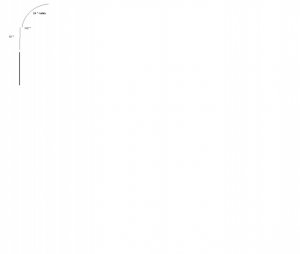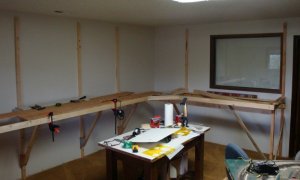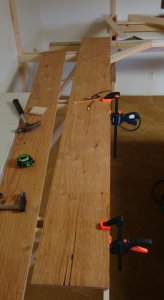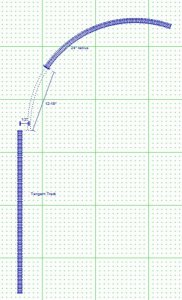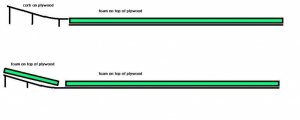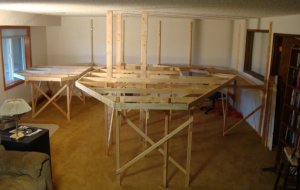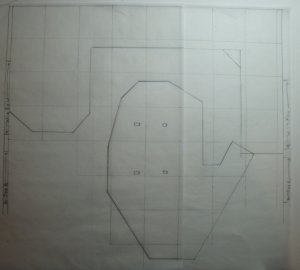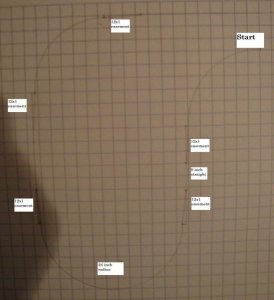The framework is going up and I have a ruff sketch of the plan. I plan to have 24 inch curves on the main. I will have a small freight yard 8 feet long with four tracks.
I have some questions about this.
I think that I will space the tracks 2 inches apart. Is this good spacing? What number of switch should I be using?
I have made a full scale template for the 24 inch curve. When I place the flex track should the center of the track go on this curve? What would be the correct number turn-out for 24 inch curve?
How would I make a template for the easement for 24 inch curve?
Thanks for your help.
Kent
I have some questions about this.
I think that I will space the tracks 2 inches apart. Is this good spacing? What number of switch should I be using?
I have made a full scale template for the 24 inch curve. When I place the flex track should the center of the track go on this curve? What would be the correct number turn-out for 24 inch curve?
How would I make a template for the easement for 24 inch curve?
Thanks for your help.
Kent


